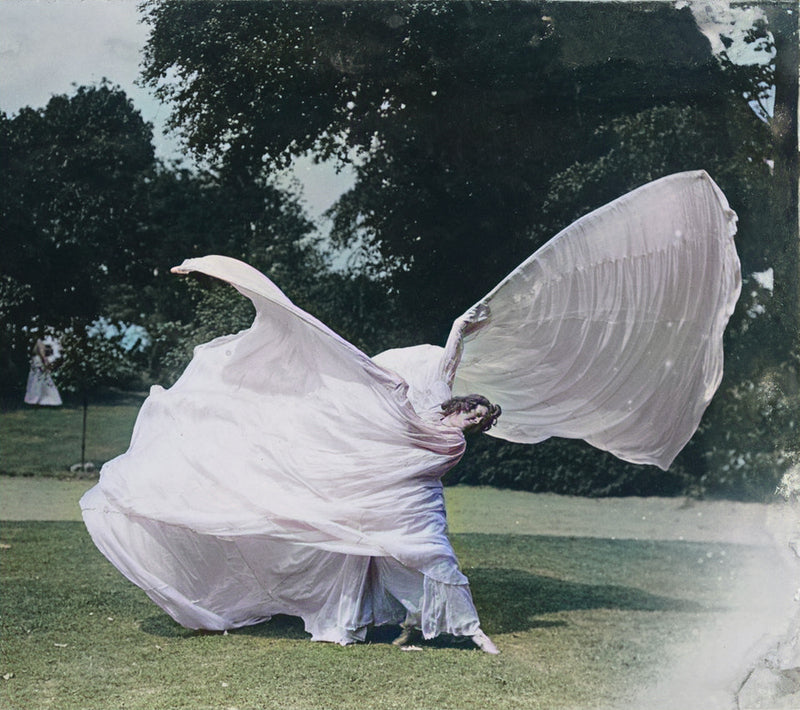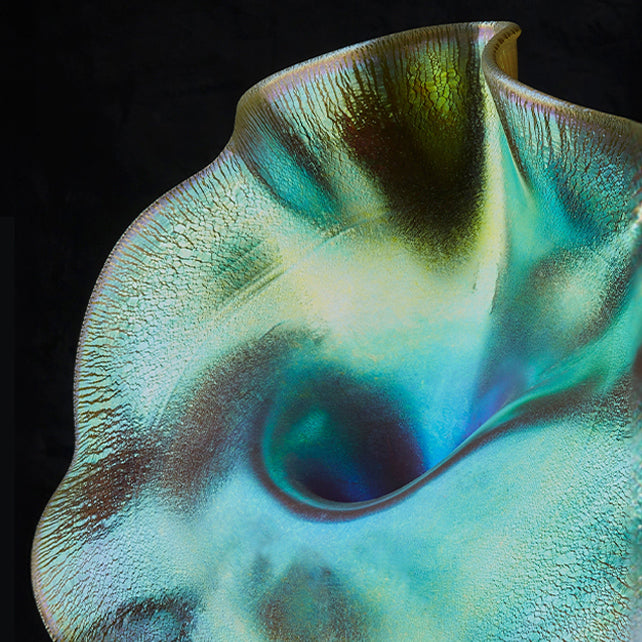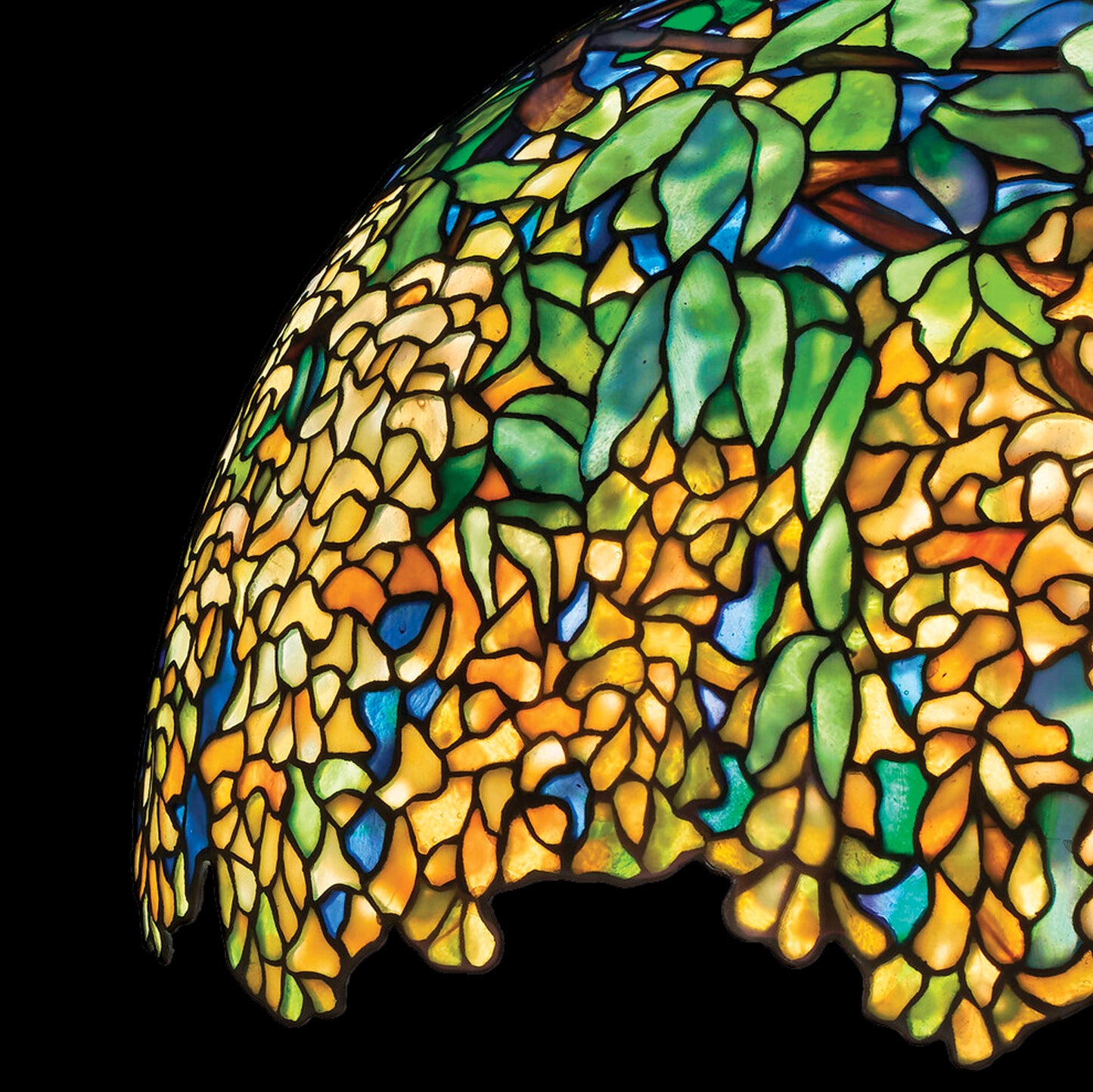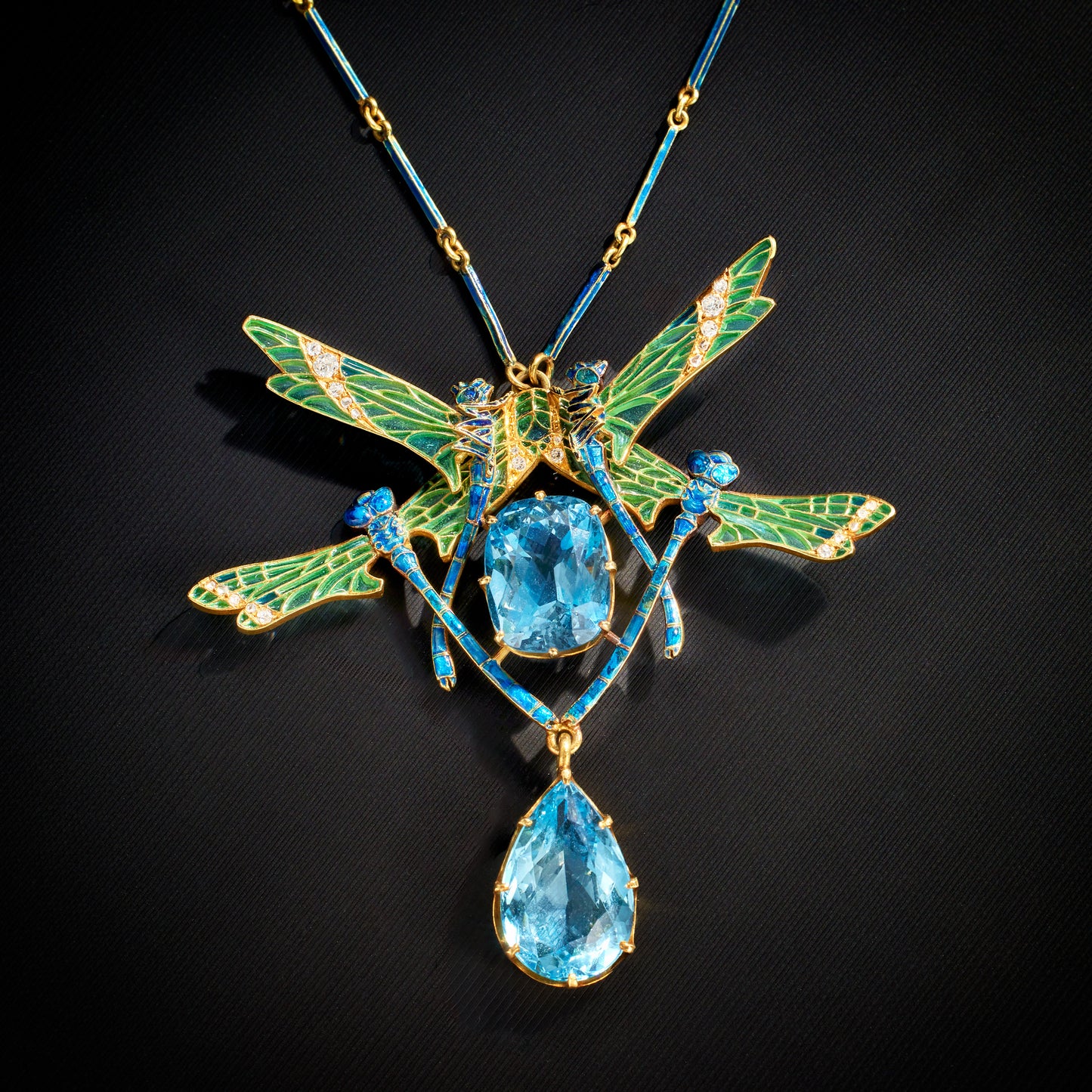François-Raoul Larche Lighted Gilt Bronze Sculpture of Loïe Fuller
This French Art Nouveau gilt bronze lighted sculpture of Loïe Fuller, was designed and sculpted by François-Raoul Larche. This is the most famous of all bronzes to be made in the Art Nouveau aesthetic. Here, Larche represents the famous American dancer and choreographer, Loïe Fuller, performing the scarf dance for which she was international famous. Her flowing robes and fabrics conceal a single light bulb. Fuller was famous for using the billows and movements of her specially-made clothing, along with different colored lights, to create a fantastical environment. For this piece, Larche makes reference to both Fuller's clothing and the shining lights used to illuminate her dances.
Item #: S-18767
Artist: François-Raoul Larche
Produced By: Siot-Decauville Fondeurs, Paris
Country: France
Circa: 1893-1905
Dimensions: 13.25" height, 7" depth, 5.75" width
Materials: Gilt bronze
Signed: "Raoul Larche" and numbered "017," with foundry mark
Literature: Similar sculpture seen in Art Nouveau Belgium France, Yvonne Brunhammer, exh. cat., Institute for the Arts, Rice University, Houston, 1976, p. 266, no. 420; Similar sculpture also seen in Art Nouveau and Art Deco Lighting, by Alastair Duncan London, 1978, p. 112, no. 55; Similar sculpture also seen in Art Nouveau, by Judith Miller, p. 197
Exhibition History: This lamp was available for sale during the 1900 Éxposition Universelle, inside the Loïe Fuller Theater, designed by Henri Sauvage; it has been the subject of numerous museum exhibitions, most notably at the Virginia Museum of Fine Arts and the Villa Stuck Museum in Munich, Germany
Item #: S-18767
Artist: François-Raoul Larche
Produced By: Siot-Decauville Fondeurs, Paris
Country: France
Circa: 1893-1905
Dimensions: 13.25" height, 7" depth, 5.75" width
Materials: Gilt bronze
Signed: "Raoul Larche" and numbered "017," with foundry mark
Literature: Similar sculpture seen in Art Nouveau Belgium France, Yvonne Brunhammer, exh. cat., Institute for the Arts, Rice University, Houston, 1976, p. 266, no. 420; Similar sculpture also seen in Art Nouveau and Art Deco Lighting, by Alastair Duncan London, 1978, p. 112, no. 55; Similar sculpture also seen in Art Nouveau, by Judith Miller, p. 197
Exhibition History: This lamp was available for sale during the 1900 Éxposition Universelle, inside the Loïe Fuller Theater, designed by Henri Sauvage; it has been the subject of numerous museum exhibitions, most notably at the Virginia Museum of Fine Arts and the Villa Stuck Museum in Munich, Germany





















